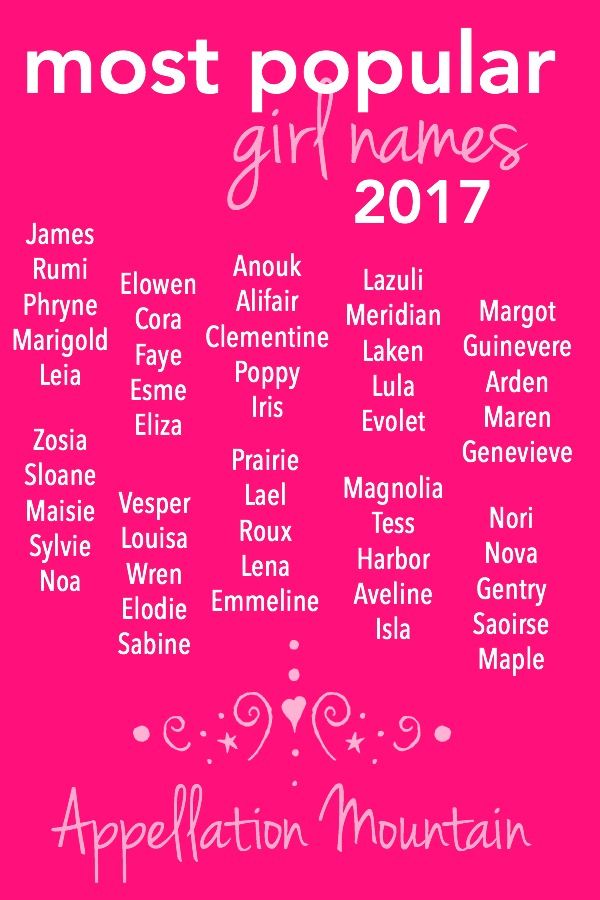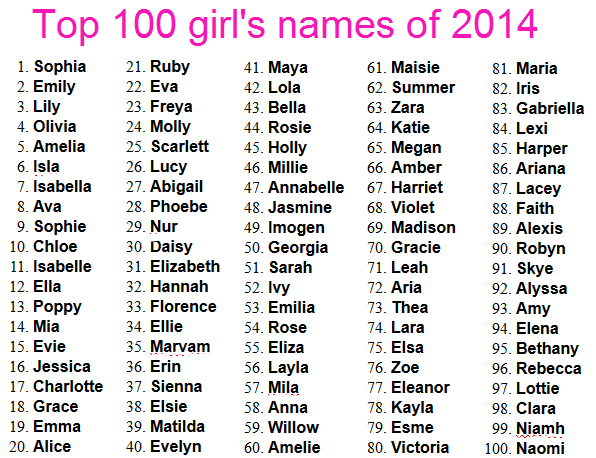Sky girl names: Girl Names That Mean Sky We Love
Posted onGirl Names That Mean Sky We Love
From Alya to Ciela to Miku and beyond, this list of girl names that mean sky is filled with a variety of feminine and strong-sounding names. Explore the list and find a delightful option for your daughter.
RELATED: More Baby Names That Mean Strong
- Aethra This is a pretty female name that can also be spelled Aithra. It is of Greek origin and means bright sky.
- Ahana Here is a Japanese name that is pretty sounding for a girl. Sky flower is the meaning and it rolls easily off of the tongue.
- Alya A girl’s name that means “sky or heavenly”. It is of Arabic origin.
- Amberley This name stems from 12th century England and is a stunning name for a little girl. It is a sky name meaning amber of the moon and sun.
- Anila Here is a precious name that is rare and pretty for a baby girl. Of Hindi origin, it means “child of the wind”.
- Anore Taken from the old Greenland name of Anori, this is a favorite girl’s name in Japan.
It means “wind in the sky”.
- Amaterasu Amaterasu was a Japanese sun goddess and makes a very special name for a little girl. It means “heaven and sky”.
- AraceliLatin American/Spanish roots designed this lovely girl name meaning “alter in the sky”. It is pronounced a-ra-SEH-lee.
- AriaOne of the top 100 most popular girl names thanks to Game of Thrones. It is of Italian origin and means “air”.
- Azurine A rich and classy French name that is perfect for your darling little girl. It means “sky blue”.
- Breeze Short and sweet, Breeze is a memorable name for a girl. It is of English origin and stands for “light gentle wind”.
- CelesteSpanish/French in origin, Celeste is a beautiful name for a baby girl. The meaning is “celestial or heavenly”.
- Celine A female name that is super sophisticated and posh. Of French origin, it means “sky”.
- Ciela A Spanish version of Celine for a baby girl. It means “from the sky”.
- Dangira A rare girl’s name that is only heard in Lithuania.
A lovely reflection of the sky that is pronounced dahn-GHEER-ah.
- Falak This Muslim girl’s name is of Arabic origin. It is different, yet lovely, and means “strength, the sky”.
- Iima Of Scandinavian origin, Iima is an unusual name for a baby girl. Meaning “the air”, it could be that special name you are seeking.
- Indra Indra is of Sanskrit origin and is used in Hindu mythology. This is a nice female name with a strong Royal meaning of God of rain and sky.
- IrisIris is of Hebrew origin and means “rainbow” in Greek. This is a special short name for a newborn girl.
- Miku A short and cool name for your baby girl. Of Japanese origin, it means “beautiful sky”.
- Nasema Rich and lovely, Nasema stems from Arabic roots. A nice-sounding name for a baby girl and means “breeze, fresh air”.
- Nephele Of Latin and French origin, Nephele is a pleasing sounding female name. It means “cloudy skies”.
- Seren Of Turkish origin, this is a sweet girl’s name.
It means “a star in the sky”.
- Tadita Here is a pretty name of Native American origin for a little girl. It is a sky name that means “to the wind”.
- TheaGreek in origin and lovely for a baby girl. The definition is “mother of the sun, moon, and dawn”.
- Tsisana Of Georgian country origin, this is a special name for a baby girl. It means “of the sky”.
- Zerua A rare and simple name, Zerua is perfect for a baby girl. Of Basque origin, it means “sky and heavens”.
Peruse thousands of baby names on MomsWhoThink.com! And follow us on Pinterest for more parenting inspiration!
Sky — Baby Name Meaning, Origin, and Popularity
Sky — Baby Name Meaning, Origin, and Popularity | NameberryMenuFind your type now Arrow Right
AboutQuiz
Nature name
Sky Origin and Meaning
The name Sky is both a boy’s name and a girl’s name of English origin.
Sky may be a bit hippie-ish, but it’s bright and sunny nonetheless.
#
717
in the US
Sky Rank in US Top 1000
Sky Popularity
- 717US2021
- 1324Nameberry2022
- 121Unisex2021
- 592Future2028
- 718England2021
20 Names Similar to Sky
These 20 names were selected by our users that were looking for other names like Sky.
- HeartSkyeChevron — Right
- HeartSkyChevron — Right
- HeartSkylarChevron — Right org/ListItem»>HeartSummerChevron — Right
- HeartRainChevron — Right
- HeartTopazChevron — Right
- HeartStormChevron — Right
- HeartSkylerChevron — Right
- HeartSnowChevron — Right
- HeartMeadowChevron — Right
- HeartSapphireChevron — Right
- HeartPhoenixChevron — Right org/ListItem»>HeartMoonChevron — Right
- HeartSpringChevron — Right
- HeartPetalChevron — Right
- HeartWinterChevron — Right
- HeartFalconChevron — Right
- HeartOceanChevron — Right
- HeartSierraChevron — Right
- HeartStarChevron — Right
Famous People Named Sky
- Sky Tonia FerreiraAmerican singer/songwriter, model, and actress
- Sky Copperfield (b. 2002)daughter of magician David Copperfield
- Sky Anjali Guptadaughter of TV personality Sanjay Gupta
- Sky Hakmoun (b.
2002)daughter of singer Paula Cole
- Sierra Sky Fisherdaughter of model/TV personality Brooke Burke Charvet
- Allegra Sky Leguizamodaughter of actor John Leguizamo
- Ariana Sky Magro (b. 2018)daughter of TV personality Ronnie Ortiz,Magro
- Sky Brown (b. 2008)Pro,Skateboarder and contestant of Dancing with the stars Junior S1
Sky in Pop Culture
- Sky Mangelcharacter in Australian TV soap «Neighbours»
- Sky Smithcharacter in «The Sarah Jane Adventures»
- Skycharacter in «The Unwanteds» by Lisa McMann
- «Sky» Daisy Johnsoncharacter in Marvel’s Agents of S.H.I.E.L.D.
who and how names the planets and stars — Knife
The ancient peoples knew only about the Sun, the Moon and the five planets closest to the Earth: Mercury, Venus, Mars, Jupiter and Saturn. These names came to us from the Romans, who named celestial objects after their deities. All other planets were discovered only after the invention of the telescope, and scientists were already practicing cosmonymic art.
In 1781, British astronomer William Herschel discovered Uranus. His first impulse was to name the discovered object the Star of George, after King George III.
Fortunately, this initiative was not successful, and astronomers decided to continue the tradition of mythological names. Herschel chose Uranus, the father of Saturn and the grandfather of Jupiter among the Romans.
After studying the planet’s orbit, a discrepancy between its actual position and the calculated one was noticed. Some astronomers have come to the conclusion that there is a large cosmic body next to Uranus, which affects the trajectory of its movement. This planet was discovered in 1845 and named after the god of the seas, Neptune. But at the end of the 19th century, scientists suggested that he was not the last in a row. This theory was actively defended by Percival Lowell, also famous for finding channels on Mars. He tracked down the ninth planet of the solar system until his death, but it was discovered only in 1930 and was named after the Roman god of the underworld.
Even before the discovery of Uranus, Neptune and Pluto, the question arose: what names should be assigned to their satellites? When Galileo discovered the four moons of Jupiter in 1610, he named them the Medici Stars after his patrons, an influential Tuscan family. Almost simultaneously with the great Italian, the German astronomer Simon Marius also saw the satellites. In his opinion, these objects should have been named by analogy with the known planets, and he proposed the names Mercury of Jupiter, Venus of Jupiter, Saturn of Jupiter and Jupiter of Jupiter. Mars did not find a place in such a classification, and the famous red hue did not appear on the surface of the moons.
Simon’s friend, astronomer Johannes Kepler chose other names: Io, Europa, Ganymede and Callisto — in honor of the lovers and mistresses of the ruler of Olympus. They are still in use today. Satellites discovered already in the 20th century are also mythologically connected with Jupiter: it is surrounded by wet nurses, wives, daughters and even granddaughters.
A similar story happened with the satellites of Saturn, discovered at different times. At first, astronomers simply numbered them, but it became more and more difficult to distinguish between the moons of the most ringed planet in the solar system. When their number reached seven, John Herschel, the son of the discoverer of Uranus, proposed to give them the names of the titans and titanides from ancient mythology: Mimas, Enceladus, Tethys, Dione, Rhea, Titan and Iapetus. Initially, the satellites wanted to name the children of Saturn, but, according to legend, he devoured his offspring, so astronomers chose his brothers and sisters.
Space names today
The International Astronomical Union (IAU), which has existed since 1919 and recently celebrated its centenary, usually names space objects. If you have never heard of him, do not worry: these are the same people who decided that Pluto is no longer a planet.
Modern IAU rules regarding celestial nomenclature have become a little more liberal.
The rules for planetary nomenclature are surprisingly specific and often contradictory. For example, asteroids can be called almost anything, but there are certain standards. First, names that are too long or offensive are unacceptable. It is necessary that they can be easily pronounced and distinguished from those already available. Any business terms are prohibited (sorry, Elon Musk), and animal names are viewed with disapproval. You can offer the name of a politician, a military man, but only a hundred years after his death.
The origin of some names deserves a separate story.
Asteroid 21 Lutetia is the largest asteroid ever recorded by a spacecraft. The name was given to it by the French astronomer Herman Goldschmidt, who noticed the celestial body from the balcony of his Parisian apartment in 1852. Lutetia is an ancient settlement on the site of the current French capital, and the number means that the object was discovered 21st in a row.
Another asteroid — 951 Gaspra — was discovered in 1916 at the Simeiz Observatory. Its craters are named after famous earthly resorts.
The situation is quite different with the stars. Most of them, especially the dimmer ones, only have coordinates and an index. Giving each one a meaningful name would be an impossible task: the Reference Star Catalog, which is used for space navigation, now lists 945,592,683 objects.
For those who are burning with the desire to give a name to some cosmic luminary at any cost (or even snatch a surface area there) and are even ready to pay for this pleasure, there are two news. Good: such services really exist! The bad: The IAS is not in the business of selling star names or real estate on other planets and moons in the solar system. You can leave as much money as you like on “name a star” sites, but you will just get a beautiful certificate with patterns, and it is not recognized by any astronomical community in the world. The name you choose will only be valid for the organization you paid for.
The IAU has a thematic system for naming geographic features of planets, asteroids and moons. Previously, they were associated mainly with Greek or Roman gods, but over time, there was a place in space for other epics.
Venus Valleys with a diameter of more than 400 kilometers are called words denoting the planet itself in different languages. Therefore, the exotic Apisuahts (as our space neighbor is called by the Indians of Canada), the Aztec Citlalpul and the ancient Greek Kallistos are found there.
The lowlands are named after the heroines of myths and fairy tales, for example, the plains of the Mermaid and the Snow Maiden. Any geographic feature of Venus must be the namesake of a famous woman (real or fictional).
The only exceptions are the Maxwell Mountains, as well as the Alpha Regio and Beta Regio regions. These objects received their names (the first one is in honor of the English physicist, and the letters of the Greek alphabet are used in the names of the second and third) until the end of the 1970s, when the onomastic fem-rule came into force.
Martian craters less than 60 kilometers in diameter bear the names of terrestrial settlements whose population does not exceed 100,000 people. It is not very clear, however, what happens if the number of inhabitants increases. Perhaps the crater is being blown up or people are being evicted.
An interesting story is the already mentioned satellite of Pluto — Charon. Its discoverer, American astronomer Jim Christie, promised to name the object after his wife Charlene.
Celestial objects can be given celebrity names, but only three years after their death. Sometimes the IAU breaks its own rules, which is why asteroids Sandra Bullock, Tom Hanks and Meg Ryan are already roaming the universe.
Members of the Monty Python group were also honored to ascend to the sky along with The Beatles and Yoko Ono.
New worlds
Today, the International Astronomical Union is focused on finding names for new exoplanets — those that are outside the solar system. At the end of the 20th century, scientists discovered only a few such objects, but over time they became more and more, so the IAU even launched its own competition, the winners of which will be able to name a celestial body.
Sometimes amateur versions turn out frankly unsightly. So, in 2017, the IAU chose 17 winning names. As a result, we got names like Royaldutchastro after the Dutch Association of Meteorology and Astronomy, Brevardastro after the Brevard Astronomical Society, and even Thunder Bay after a town in Canada.
But sometimes the proposals of space fans turn out to be quite witty. Astronomy enthusiasts often play with object numbers to come up with a suitable name. For example, the asteroid 8191 became the namesake of the French mathematician Marin Mersenne, who studied prime numbers (8191 is one of them). And the asteroid 2037 received the uneasy name Tripaxeptalis. If you decompose this nonsense into syllables, then you get Three-pax-set-elis — arithmetic problem: the number 2037 in three times greater than 679 and in seven times — 291, and these are the numbers of the asteroids Pax and Alice, respectively.
In addition, thanks to the IAS competition, peoples around the world get the opportunity to perpetuate their own cultural codes in the names of celestial bodies and somewhat diversify the pantheon of bronzed idols of European Antiquity.
Star sexism
William Herschel’s sister Caroline was an honorary member of the Royal Astronomical Society of London, actually paved the way for women in this science, discovered eight comets and three nebulae — but did not gain even a fraction of the fame that went to her brother, who saw in the sky Uranus.
Unfortunately, classical mythology often treated the «weaker sex» contemptuously and condescendingly. While male images of strong kings and conquerors are familiar, understandable and immortalized in cosmonyms, female characters are destined for an unenviable role.
Among them is the constellation Cassiopeia, located in the Northern Hemisphere and named after the mythical queen of Ethiopia. Poseidon punished her for her vanity by sending a sea monster to the country. Cassiopeia’s daughter Andromeda also suffered for her mother’s sins. She was chained to a rock, where the monster Kit was supposed to find and rape the girl. According to the myth, the hero Perseus managed to save Andromeda, but in the constellation the princess still hangs on a cliff above the sea, waiting for her fate. Cassiopeia herself was sent to heaven on a throne, but there she is upside down.
The Pleiades, also known as the seven sisters, is a collection of stars in the constellation Taurus. According to legend, they were once nymphs dancing under the night sky. The girls were noticed and desired by the hunter Orion, after which he began to pursue them. Numerous tricks of the sisters did not help, and then Zeus placed them in the sky. Orion is still pursuing its victims — also in the form of a constellation.
Male astronomers will find more inspiring role models in the sky.
These are stories of heroism and victories, not fear, humiliation and submission.
Even today, space missions and vehicles are named after mythical demigods and great men. The ship «Orion» is named after the same hunter for the seven sisters. «Kepler», «Galileo», «Copernicus», «Cassini», «Ulysses» (Odysseus) — this is not a complete list of such devices. Even the generally neutral names «Voyager» and «Pioneer» are «masculine» and are associated with the images of men who left their native land and set off towards the unknown.
If there is a place for women in space missions, then their names are perceived in two ways. Thus, the apparatus that studies the atmosphere of Jupiter is named «Juno» — in honor of the Roman goddess, the wife of the Thunderer. According to legend, she had the gift to see through the clouds and therefore knew which mistress her husband was playing with.
The Artemis lunar mission is named after the Greek goddess of hunting, fertility, chastity and motherhood. One gets the feeling that it was chosen because Artemis is the sister of Apollo, after whom the first US space program was named.
Finding names for objects inside and outside the solar system is still a difficult task. Despite the desire of astronomers for conditional neutrality, the choice is often influenced by the human factor and the history, culture or politics of a particular nation. Most of the names are still «Eurocentric», associated with Western civilization, although the situation is gradually starting to change.
Forbidden Masha – News – IQ Research and Education Portal – National Research University Higher School of Economics
A year ago, IQ.HSE published a series of materials on the history of Russian anthroponymy based on research by HSE scientists Fyodor Uspensky and Anna Litvina. However, we almost did not touch on female names then. They stealthily made their way into the list of male names — in much the same way as Elizabeth Sparrow found herself among the men in the register of «dead souls» presented to Chichikov by Sobakevich in the famous Gogol poem. Restoring justice and trying to avoid gender asymmetry, we talk about the curious nuances of the female name in pre-Petrine Rus’.
Masha, but not yours
The name of the Mother of God of the Virgin Mary in Rus’ since the pre-Mongolian times, and then centuries later, in the late Middle Ages — in the 16th-17th centuries — it was impossible to receive either in baptism or during monastic vows.
The taboo on assigning sacred names to ordinary people existed in different cultures, not always associated with Christianity. However, the nature of these restrictions varied greatly. Both the “inaccessible” names themselves could differ, as well as a set of models or a set of rules that allow, without violating the prohibition, to nevertheless involve these anthroponyms in the “turnover” of names.
However, the name Maria in Rus’ was still common. How can this be explained, given the veto on the use of this nomen sacrum (sacred name)? One answer is pretty obvious. The Mother of God had many namesakes among the saints: Mary of Egypt, Mary Magdalene, Mary of Golindukha, Mary of Cleopova (mother of the Apostle James), Mary of Bithinskaya. In their honor, newborn girls or adult women who converted to Orthodoxy were baptized. So the personal heavenly patrons of Mash and Marus were precisely the Marys of the “second row”, but not the Mother of God.
As the theologian Sergei Bulgakov (not to be confused with his namesake, the famous religious philosopher Sergei Bulgakov) explained in his Handbook for Clergymen, “the name Mary is given not in honor of the Most Holy Theotokos, but in honor of the holy women who bore this name” . In other words, the namesake of a woman named Mary can be considered one or another saint of the same name, but not the mother of Jesus Christ.
Also read
One of the earliest descriptions of naming a newborn with the name Maria occurs in the middle of the 12th century. The daughter of Prince Svyatoslav Olgovich (in the baptism of Nicholas) was born. In the Complete Collection of Russian Chronicles we read: «<...> Rodis ou St҃goslav Ҡlgovicha’s daughter was narrated in the baptism of the name of ei Mr҃bӕ» . Her birthday is probably August 7th. She was given the name, probably, after St. Mary Magdalene (Comm. 22 July; hereinafter, all dates are given — in accordance with historical logic — according to the old style).
The opportunity to give a name not directly according to the saint whose memory is celebrated on the day the child was born, but in approximate accordance with the calendar was willingly used in Rus’. In the case of Maria Svyatoslavna, the calendar was not scrolled forward, but backward. But this was also a common thing, especially when choosing a female name.
At the same time, the aura of the approaching feast of the Assumption of the Most Holy Theotokos (August 15) could influence the choice of the name. As already mentioned, the cult of the Mother of God was strong in Rus’. However, there is no reason to believe that the princess was named directly in honor of the Virgin. In general, stories with the choice of the name Maria in Medieval Rus’ always look non-trivial.
Collective patronage
The origin of the ban on naming in honor of the Mother of God — apparently still pre-Mongolian — still remains a mystery. Neither Byzantium nor the West knew such total restrictions on the use of this nomen sacrum .
Whether we are talking about a syncretic (cumulative) veneration of all the saints — namesakes of a particular Christian — or about the cult of a particular saint, with whom the naming is related, nowhere is the Mother of God directly connected with a personal name, whether it is a hagiographic story (life) or a laconic record in the monastery deposit book.
Here is an example of the collective veneration of Saint Mary. In the Life of Joseph Volotsky (in the world of Ivan Sanin), created by Bishop Savva Cherny, the death of the saint’s mother, Marina Sanina, in monasticism — Mary, is described as follows: “Maria Magdalene and Marya Іѧkovlѧ [the mother of the Apostle James, Maria Kleopova] and Marya Egyptskaya came after me. Don’t you see now? everything is worth it to me. And the verb uzhzhe: «Mistress Mary, I’m coming with you.» <...> In that hour she will betray her spirits to G[o]s[to] devi, and ѡtide with Maryami» .
This vision does not allow us to judge in honor of which of the three named saints Mary Marina Sanina was named in monasticism (note that the first letter or first syllable of the monastic name usually echoed the baptismal one). Probably, we are talking about the inseparable veneration of the holy namesakes, who lead the nun into eternal life.
Undoubtedly, the Mother of God could also appear in visions. But in the texts there is no correlation of her name with the personal names of the visionaries. In addition, the Mother of God could not appear among other saints Mary to the owner of this name.
Also read
Syncretic veneration of several namesake saints was also observed among men. So, a Christian named Andrew could honor three saints at once: Andrew the First-Called, Andrew of Crete and Andrew the Fool. And among the patrons of Vasily III, the father of Ivan the Terrible, were Saints Basil of Pariah (the sovereign was named in his honor) and Basil the Great (Caesarea).
The second birth of the royal bride
Cases of baptism with the name Mary of already adult converts are indicative. So it was with one of the wives of Ivan the Terrible, Princess Kuchenya, the daughter of the Circassian prince Temryuk. In history, she is known as Maria Temryukovna.
Incidents of this kind — with the baptism of adults — are very informative. All stages of such naming took place in public, they were better imprinted both in the minds of contemporaries and in written sources. It is possible, for example, to more confidently track that stage of joining the church, when a person who has not yet been baptized already has a Christian anthroponym obtained by saying a special prayer for the naming of a name. So it was with Maria Temryukovna.
The procedure for the appeal of the Circassian princess began on July 6, 1561. On this day, she received a Christian name in honor of Mary Magdalene (like the above-mentioned Mary Svyatoslavna). The procedure ended two weeks later, on July 20, when Metropolitan Macarius baptized the royal bride.
The Collection of Chronicles says: “The same summer, July on the 6th day, in the week, Archpriest Andrei of the Annunciation of Cherkasy announced for baptism and named her name in the name of St. Mary Magdalene; and the Tsar and Grand Duke Ivan Vasilievich of all Russia named her his bride. On the same month, on the 20th day, on the week, in memory of the holy prophet Elijah, Princess Mary of Cherkasy was baptized<...>” .
It is important to note here that the day of the announcement of an adult is likened to the birthday of a baby. The patron saint is selected in the calendar vicinity of this date and is assigned to the new convert some time before the act of baptism. Baptism itself can be separated from the day of uttering a prayer for the naming of a name for a certain period. The same two weeks are quite appropriate.
The desire to coincide exactly with the day of baptism on the day of the celebration of the holy patron is rather an exception than a rule, so in this respect, the Christianization of Maria Temryukovna was standard. Rather, the commemoration of a Christian after death was timed directly to the celebration of a personal patronal saint. The same Maria Temryukovna, who died in 1569year, commemorated on the day of her death (September 6) and «in her memory July on the 22nd day» , on the day of Mary Magdalene.
Badges of heavenly patrons
Commemorative and supplementary records are a good source of information about the Christian names of women in pre-Petrine Rus’. For example, a contribution record of the middle of the 16th century by Maria, the widow of Mikhail Ivanovich Semyonov.
Maria Semyonova indicates which days it is necessary to commemorate her and her husband, and thus names her heavenly patrons: “And write my husband Michael in the senaniks in the daily and in the foundry, and in his memory on November 8, at the cathedral of Archangel Michael , and reproach and mass serve as a cathedral, and put food on the brothers, and feed the poor, as possible, she writes.
In other words, Mikhail Semyonov was named after Archangel Michael, the head of the holy host, and his wife was named after Mary of Egypt. However, data on monastic contributions, tombstones and information about the commemoration of the dead offer another answer why in pre-Petrine Rus’, with a large number of Marys, the ban on naming in honor of the Virgin was still not violated.
Name according to the icon
An interesting case of obtaining the name Maria is described in the Synodic of the Sheleshpalsky princes, a manuscript collection of the 17th century. It speaks of the death of Maria Gavrilovna, the wife of Prince Andrei / Peter Shelespalsky. She died on January 8, 1607, but, oddly enough, it was supposed to be remembered on July 28.
As already mentioned, the days of commemoration coincided with the day of death of a person and / or with the days of memory of the saints named after him. Where did July 28 come from? There were no «Mariinsky» holidays on this day. Or did Sheleshpalsky’s wife have another worldly Christian name?
The remark clarifies the picture: “And the memory of Princess Marya of the month of July on the 28th day, in memory of the holy martyrs Prochorus and Nicanor, on the same day the Meeting of the Most Pure Mother of God of Smolensk” . Thus, the compiler of the Synod emphasized that on the day when the princess should have been commemorated, the icon of Hodegetria of Our Lady of Smolensk, brought from Byzantium in the 12th century, was celebrated. The heyday of the veneration of this image fell on the 16th — first half of the 17th century. The all-Russian celebration was established in 1525. The celebration of a number of miraculous icons associated with it was later timed to the same date — July 28 — the Igritskaya (Pesochenskaya) Mother of God of Smolensk, the Sedmiezernaya Smolensk Mother of God, the Smolensk Icon in the Kostroma Epiphany Monastery.
Receiving the name of a saint on the day of the celebration of his icon or on the transfer of relics is a characteristic phenomenon for the 16th — early 17th centuries. In the same Sheleshpalsky family, Prince Dmitry Mikhailovich, a relative of Maria Gavrilovna, was named after the feast of the Presentation of the miraculous icon of Demetrius of Prilutsky (saint of the Russian Orthodox Church), which, apparently, fell on his birthday. The husband of Maria Gavrilovna, Andrei / Pyotr Ivanovich Sheleshpalsky, received one of the names on the feast of the Transfer of the Relics of Metropolitan Peter.
In all three cases, apparently, the adherence of the 16th — the first half of the 17th century to Russian holidays proper also played a role. These included celebrations both for the saints glorified in Rus’ and for the icons revealed here.
Of course, there was also a desire to time the naming to coincide with the date of the birth of the child. This is how the practice develops when a child could, for example, be named Dmitry in honor of Demetrius of Prilutsky directly, since he was born on the eve of or immediately after the day of commemoration of this saint.
Workaround
The newborn, although she could not be called Mary in honor of the Mother of God, could receive this name indirectly — on the day of veneration of the Mother of God icon. Thus, the girl became the namesake of one of the revered images of the Mother of God, and the sacred name was used without violating the ban.
Such a story happened to Maria Saltykova, nee Kurakina, the sister of an associate of Peter I, diplomat Boris Kurakin. The inscription on her tombstone reads “February 6th day [1740] at 9 o’clock in the afternoon in memory of the Reverend Father of our Vukol Bishop of Smyrna, the servant of God, the wife of the Near Stolnik, Ivan Stepanovich Soltykov, reposed, widow Marya Ivanovna, daughter of Bolyarin Prince Ivan Grigoryevich Kurakin, from the birth of her 64 years and 9 months, and her name day is July 7<...>” .
Also read
As we remember, “name day” refers to the date of celebration of the patronal saint.
Now it is clear why in the “Ancient Russian vivliophics” (1788-1791) published by the educator Nikolai Novikov, “a collection of Russian antiquities”, where, in fact, the inscription is given, there is a special note to it: “With this inscription, the image Mother of God on a Wooden Board» . We are probably talking about the image of the Blachernae Mother of God, which served as a tomb icon on the grave of Maria Saltykova.
And one more similar case. In the princely family of the Tatevs, where the names were given exactly according to the date of birth, there was a daughter, Maria. One of her commemorations is timed, as written in her mother’s letter, to August 15 — her birthday. Note that for the brothers of Princess Maria Borisovna, the memorial date was directly related to their heavenly patrons.
The connection between the choice of a name and the feast of the Mother of God, whether it be the Assumption, the Entry into the Temple (this is how Maria Mikhailovna Prepodova got her name, for example, in the marriage of Stroganov) or another event, is indirect, and therefore permissible. The celebration of the icon was once timed to coincide with the feast of the Mother of God, and with it, in turn, the naming of the newborn was associated.
By the way, the celebrations of a number of Mother of God icons were timed to coincide with August 15 — from the Russian ones, it is enough to mention Vladimir, Pskov-Pechersk, Rostov, Chukhloma. Most likely, Princess Tateva got her name from one of these icons. Thus, the strict calendar principle of naming adopted in the family was maintained, but at the same time the ban on the use of the sacred name was respected.
Empress Maria, named Ekaterina
“And in girls, her name is Katerina, and in queens, the name is Marya” — this explanation refers to the wife of Tsar Vasily Shuisky, Maria Petrovna, nee Buynosova-Rostovskaya. In the world she had two Christian names, and in monasticism a third appeared — Elena. This name with the first letter echoed with the baptismal, non-public (Ekaterina). It was supposed to commemorate her on the memory of the Great Martyr Catherine, on November 24. Public — throne — for the queen was the name Maria.
However, there was no commemoration day for any of Saint Mary in the calendar near this date. At the same time, November 27 was the celebration of the most famous icon of the Theotokos — the Novgorod “Sign” of the 12th century, which, according to legend, helped the inhabitants of Veliky Novgorod in 1170 fight off the Suzdalians, led by Prince Andrei Bogolyubsky.
The case of Tsaritsa Maria Petrovna shows that girls could also receive additional Christian names upon marriage.
But in general, the female name, alas, was clearly worse recorded in the sources than the male name. Even in the case of Vasily Shuisky’s wife, one can only guess when exactly she got her middle name — Maria. Perhaps the future queen from childhood was both Catherine and Mary. In this case, the replica “in the girls the name is Catherine, in the queen her name is Marya” (almost identical to the first) only tells which of the names was fixed as the throne. On the other hand, it is possible to get a new name.
The name of the miracle
The incident of naming Maria Vasilievna Godunova is also interesting. She belonged to the rapidly gaining strength of the Godunov clan, was the sister of prominent nobles of her time and a relatively close relative of Boris Godunov. One brother of Godunova, Stepan Vasilyevich (second name Evdokim), in the summer of 1587 headed the Russian embassy to the Commonwealth and achieved a separate truce with the Grand Duchy of Lithuania for 15 years.
March 25 was the Annunciation of the Most Holy Theotokos. But the celebration of the Mother of God image in the Zhitny yard of the Moscow Kremlin was timed to coincide with this day. There, according to legend, a miracle happened — the icon of the Annunciation spontaneously appeared on the wall of the tower (and the tower was called the Annunciation).
It is difficult to say exactly when this image was revealed. There is a legend that connects his veneration with the era of Ivan the Terrible. When exactly Maria Vasilievna Godunova was born is also unknown — probably when the celebration of the named Mother of God icon was already taking place (March 25).
Taboo names
The model of obtaining the name Mary from an icon, which allows indirectly naming a newborn in honor of the Mother of God, raises a number of questions. For example, where did the custom come from? It was not a borrowing from Byzantium — there seemed to be no ban on the use of the name of the Mother of God as a baptismal one. At the same time, in Byzantium there were many practices related to icon veneration and the choice of a name, and they could indirectly influence the formation of the custom under study in Rus’.
Suffice it to recall, on the one hand, the Byzantine tradition of naming children after their godparents, and, on the other hand, incidents when an icon of the saint who was to become the namesake of the newborn was chosen as a child’s recipient from the font. However, Byzantine samples could only play the role of pieces of a mosaic, from which a specific model of naming according to the icon of the Mother of God independently developed in Rus’.
At the same time, the time of formation of this model is also not obvious. It may well be archaic. And the fact that this practice seems especially frequent since the middle of the 16th century may simply be due to the sharp increase in the array of available documents. In addition, it was at this time that both the naming techniques and the cult of patronal icons reached virtuoso detail.
In conclusion, let’s highlight one more nuance. The name Jesus in the Russian tradition fell under a complete ban for a layman. In baptism, babies were not called that even in honor of Joshua (although the name of this Old Testament leader of the Israelites could be received during tonsure). And even a workaround for obtaining such a name — through an icon — was impossible.
In general, the circle nomina sacra in the Old Russian church tradition can hardly be considered reliably established and stable. Apparently, it contained not only the names of Christ and the Virgin Mary.
At a certain period, the name Nikolai could be partly forbidden for baptism. Apparently, there was no such restriction in the pre-Mongol era. A number of Russian princes are known who bore this name as a baptismal name, for example, the same Svyatoslav Olgovich. In the New Age, the taboo of the name Nikolai was also not observed.
However, in the interval between the pre-Mongol era and the New Age, in the late Middle Ages, against the backdrop of the ever-increasing spread of the cult of St. Nicholas of Myra, the possibility of naming the laity by this name was sharply reduced. Probably, there was a tendency to his «pious silence». “This is due to the purely Russian veneration of St. Nicholas, the “Russian God,” as he was called,” comments Fyodor Uspensky. “In the common people, he could even be considered one of the members of the Holy Trinity.”
Can it then be assumed that rare examples of the appearance of the name Nicholas in the 16th-17th centuries are associated with the naming not in honor of the saint himself, but after one of his icons, as was the case with the naming of the name Maria? To answer this question, further research is needed.

 A lovely reflection of the sky that is pronounced dahn-GHEER-ah.
A lovely reflection of the sky that is pronounced dahn-GHEER-ah. It means “a star in the sky”.
It means “a star in the sky”. 2002)daughter of singer Paula Cole
2002)daughter of singer Paula Cole